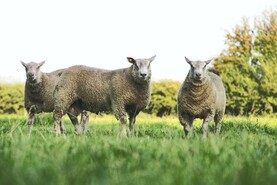While it may only be the end of August, heavy rainfall in the northwest of the country has unfortunately turned attention to housing once again.
Some suckler farmers have already housed their suckler cows with the hope of getting them out again if the weather improves in the coming weeks.
Others have housed beef cattle with the intention of continuing their finishing phase indoors.
For those who haven’t housed, the current period of inclement weather is a timely reminder that housing isn’t that far away and any small jobs or repairs to sheds should be prioritised over the next few weeks.
We outline a few tips on getting sheds in good condition ahead of housing.
1 Cleaning, washing and disinfecting: it may be a little late on some farms but cleaning out sheds and power washing is the bare minimum that should be achieved ahead of housing this winter.
Ideally, sheds will have been cleaned and power washed earlier in the summer to allow both wind and sun, two of the best forms of natural disinfectant, to do their work on sheds.
It’s recommended to leave sheds clean and dry for at least three months during the summer period. While the sun maybe not be that plentiful at the moment there is still merit in washing sheds ahead of the winter months.
A lot of infectious agents including cryptosporidium can survive in dried faeces over the summer months, so it’s important to remove as much faecal material as you can to avoid disease buildup again this winter.
Disinfecting is an important part of the process and an appropriate disinfectant should be applied to sheds to get maximum effect.
2 Check shed ventilation: check your ventilation on your sheds. Sometimes trees and hedges can grow over the summer months and where they are backing up on to a shed, this can impede airflow into sheds.
It’s especially important to check your ventilation where there have been issues with pneumonia on your farm in the past.
Hot air moves upwards in cattle sheds so it’s important that there is an unimpeded air flow both out of the shed and into the shed to maximise ventilation.
3 Water supply: make sure all drinkers in sheds are working properly and not leaking before cattle are housed. Completing these jobs when sheds are dry and clean is a lot easier than when there are cattle in the shed and space is limited.
Gates and barriers should also be checked to make sure there are no broken hangers and everything is fit for purpose.
4 Lights: with many farmers operating on a part-time basis, this means early mornings and late evening work on a lot of farms.
Check that all shed lights and yard lights are working before the dark, wet evenings of winter set in.
Have a spare infrared bulb at the ready in case it’s needed for an autumn-calving case.
5 Straw supplies: have you purchased your straw allocation or at least spoken to someone to have it on order?
Straw could be in short supply so it’s important to have a plan around how you will source it.
Leaving it until the winter months can be expensive. If you are unable to source straw, do you have a plan B, eg plastic slats in creep areas for calves and sawdust?






 This is a subscriber-only article
This is a subscriber-only article










SHARING OPTIONS: